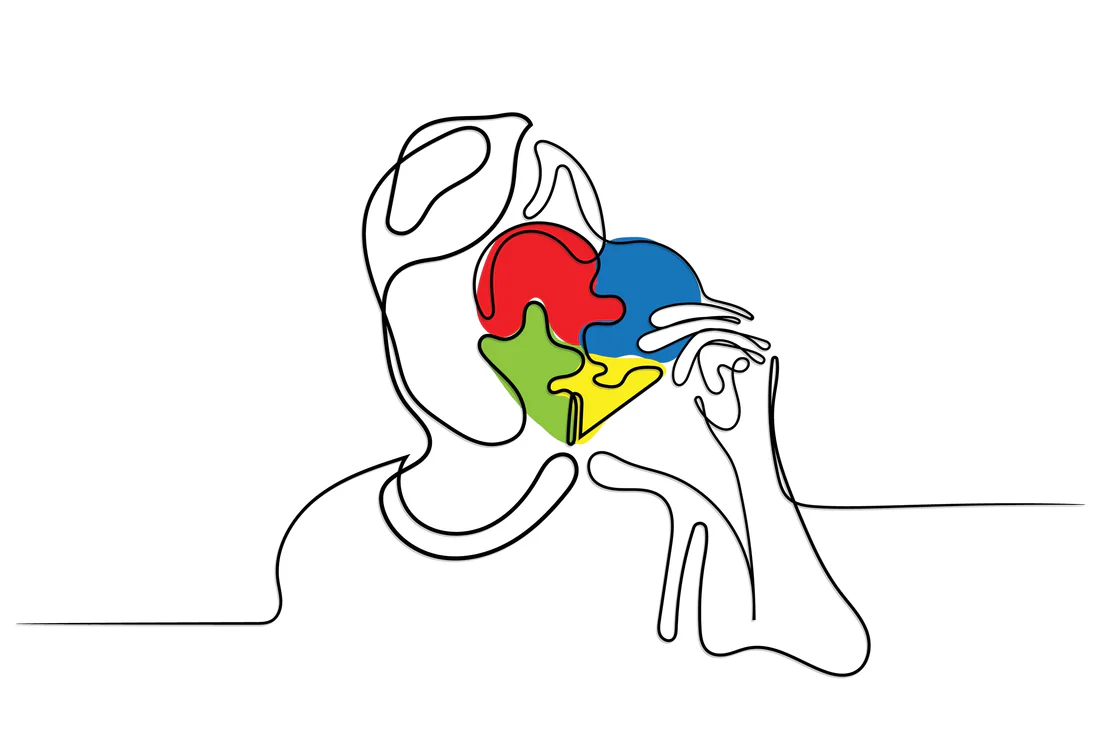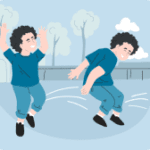Orthopedic, Mobility, & Post-Surgical Rehab
- Knee Surgery & ACL Rehab: Find Therapy After Knee Replacement
- Post-Shoulder Surgery Rehab: Rotator Cuff & Labral Repair Recovery
- Post-Hip Replacement Rehab: Recovery & Therapy
- Back Surgery Rehab & Recovery Therapy | Expert Rehab Plans
- Frozen Shoulder Adhesive Capsulitis Rehab
- Tendonitis Rehab & Treatment | Achilles, Patellar & Rotator Cuff Tendonitis Therapy
- Low Back Pain Rehab & Therapy | Expert Treatment & Recovery
- Sciatica Pain Relief & Rehab Therapy | Find Trusted Sciatica Specialists
- Neck Pain: Causes, Treatment & Therapists Near You
- Chronic Pain & Fibromyalgia: Causes, Relief & Therapy
- Torticollis in Babies & Adults: Causes, Symptoms & Therapy
- Toe Walking in Children: Causes, Therapy Options & When to Worry
- Scoliosis in Children and Teens: Symptoms, Treatment & Therapy Support
Post-Hip Replacement Rehab: Recovery & Therapy

Authored by: The DrSensory Editorial Team
Reviewed by: 🛡️ DrSensory Clinical Review Board – Doctor of Therapy Rehab Division
Last updated: June 2025
Post-Hip Replacement Recovery: Comprehensive Rehabilitation Guide
Understanding Hip Replacement Surgeries
Total Hip Replacement (THR)
Total Hip Replacement involves replacing the hip joint with a prosthetic implant to alleviate pain and improve function.
Hip Resurfacing
Hip Resurfacing is a less invasive alternative to THR, preserving more of the patient’s natural bone.
Post-Surgical Rehabilitation Phases
Phase 1 – Immediate Post-Operative Care (0–2 Weeks)
- Goals: Manage pain and swelling, prevent complications, and begin gentle range of motion exercises.
- Activities: Use of assistive devices (walker/crutches), ankle pumps, and isometric exercises.
Phase 2 – Early Mobility (2–6 Weeks)
- Goals: Increase mobility, restore basic functional movements, and begin weight-bearing exercises.
- Activities: Walking with assistive devices, hip abduction/adduction exercises, and seated marches.
Phase 3 – Strengthening and Functional Training (6–12 Weeks)
- Goals: Enhance strength, improve balance, and restore functional movement patterns.
- Activities: Bridges, step-ups, mini squats, and balance exercises.
Phase 4 – Advanced Strengthening and Return to Activity (12+ Weeks)
- Goals: Achieve full strength, improve endurance, and return to daily activities.
- Activities: Lunges, resistance band exercises, and sport-specific drills.
Importance of Physical Therapy
Physical therapy is crucial for optimal recovery, helping to:
- Reduce pain and inflammation
- Restore range of motion
- Strengthen hip muscles
- Improve functional movement
- Prevent future injuries
A structured rehabilitation program tailored to individual needs can significantly enhance recovery outcomes.
Finding a Physical Therapist Near You
DrSensory connects patients with licensed physical therapists specializing in post-surgical hip rehabilitation. Use our directory to:
- Search by location
- Filter by specialty
- View therapist profiles
- Book appointments online
For Therapists: Enhance Your Practice Visibility
Join DrSensory to:
- Increase your online presence
- Attract patients seeking shoulder rehabilitation
- Manage appointments and patient communications
Frequently Asked Questions (FAQ)
What is post-hip replacement rehabilitation?
Post-hip replacement rehabilitation is a structured therapy program designed to help patients regain mobility, strength, and function after hip replacement surgery. It includes physical therapy, exercise routines, and lifestyle adjustments to support recovery and prevent complications.
How long does hip replacement recovery take?
Recovery after a hip replacement typically takes 6 to 12 weeks, depending on the individual’s age, overall health, and adherence to rehab exercises. Full recovery, including a return to normal activity, may take up to 6 months.
What exercises are recommended after hip replacement surgery?
Common post-hip replacement exercises include:
- Ankle pumps and circles
- Quad sets
- Glute sets
- Heel slides
- Standing hip abductions
Always consult your physical therapist before starting any exercise to ensure safety and proper form.
When can I walk after a hip replacement?
Most patients begin walking within 24 hours after surgery, often with the aid of a walker or crutches. As rehab progresses, weight-bearing increases, and patients transition to a cane and eventually walk independently.
Is physical therapy necessary after hip replacement surgery?
Yes, physical therapy is crucial for a successful recovery. It improves joint mobility, strengthens surrounding muscles, prevents stiffness, and helps patients regain independence in daily activities.
Can I drive after hip replacement surgery?
Most patients can resume driving 4 to 6 weeks after surgery, depending on the leg operated on and their ability to perform emergency stops. Always get clearance from your surgeon before driving again.
What are common challenges during hip rehab?
Challenges may include:
- Pain or swelling in the operated leg
- Difficulty sleeping
- Muscle weakness
- Fear of movement or falling
A skilled rehab team can help address these issues with tailored support and gradual progression.
What should I avoid during hip replacement recovery?
Avoid the following during early recovery:
- Crossing your legs
- Bending your hip past 90 degrees
- Twisting or pivoting on the operated leg
These restrictions help prevent dislocation and promote proper healing.
How can I speed up recovery after hip replacement?
Tips to enhance recovery:
- Follow your physical therapy plan consistently
- Maintain a healthy diet and hydration
- Use assistive devices as needed
- Keep your follow-up appointments
- Avoid high-impact activities until cleared by your surgeon
When can I return to work or sports after a hip replacement?
Return-to-work timelines vary:
- Desk jobs: 4–6 weeks
- Physically demanding jobs: 2–3 months or longer Return to low-impact sports like swimming or cycling is often permitted after 3 months, but always consult your healthcare provider.
This page provides general educational content and is not a substitute for professional medical advice. Always consult a licensed provider for diagnosis and treatment.
View privacy policy, copyright and trust info
More on Orthopedic, Mobility, & Post-Surgical Rehab

- Knee Surgery & ACL Rehab: Find Therapy After Knee Replacement
- Post-Shoulder Surgery Rehab: Rotator Cuff & Labral Repair Recovery
- Post-Hip Replacement Rehab: Recovery & Therapy
- Back Surgery Rehab & Recovery Therapy | Expert Rehab Plans
- Frozen Shoulder Adhesive Capsulitis Rehab
- Tendonitis Rehab & Treatment | Achilles, Patellar & Rotator Cuff Tendonitis Therapy
- Low Back Pain Rehab & Therapy | Expert Treatment & Recovery
- Sciatica Pain Relief & Rehab Therapy | Find Trusted Sciatica Specialists
- Neck Pain: Causes, Treatment & Therapists Near You
- Chronic Pain & Fibromyalgia: Causes, Relief & Therapy
- Torticollis in Babies & Adults: Causes, Symptoms & Therapy
- Toe Walking in Children: Causes, Therapy Options & When to Worry
- Scoliosis in Children and Teens: Symptoms, Treatment & Therapy Support
Find a Therapist near you
Are you looking for a physical, occupational, or speech therapist in your area?
Look no further than the DrSensory Therapist Database and Clinic Directory!
Find a Therapist
Find the physical therapist, occupational therapist, or speech language pathologist you’re looking for!
Ask Us Anything
Whether you are looking for advice, have a general question about sensory processing, or looking for resources.
Submit Your Story
Share your story about your child. Let’s celebrate milestones and learn more about challenges.








































 Speech Therapy
Speech Therapy Physical Therapy
Physical Therapy Occupational Therapy
Occupational Therapy




